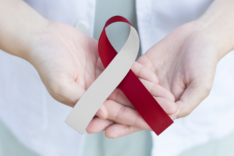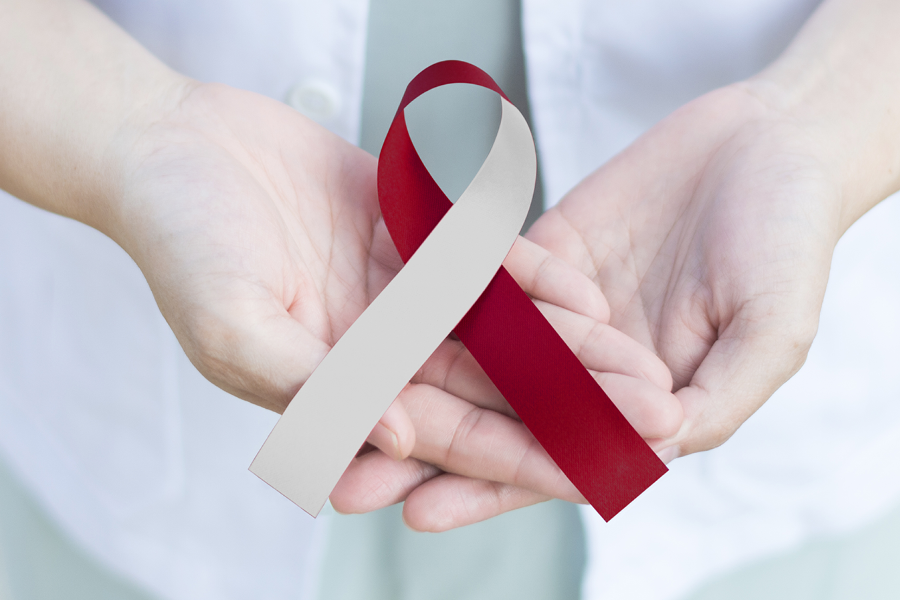Identify the signs and risks of oral cancer

*Updated April 2024
The American Cancer Society (ACS) estimates that more than 58,000 Americans will be diagnosed in 2024 with oral cavity and oropharyngeal cancers, more commonly referred to as oral cancer. Learn about the disease, its risk factors, and how early detection can save your life.
What is oral cancer?
Oral cancer is a broad term for cancer that can impact the inside of your mouth and throat. It can develop on your lips, tongue, lining of your cheeks, roof and lower part of your mouth, and nearly all parts of your oral cavity.
The most common oral cancer affects the squamous cells in your mouth. According to the ACS, “Almost all of the cancers in the oral cavity and oropharynx are squamous cell carcinomas, also called squamous cell cancers. These cancers start in squamous cells, which are flat, thin cells that form the lining of the mouth and throat.”
Once these cells are compromised, the cancer cells multiply quickly and can spread to other areas in the body.
Signs of oral cancer
In its early stages, oral cancer typically doesn’t cause any pain or other symptoms.
However, if you notice any of the following changes in your mouth be sure to contact your dentist and physician for further evaluation:
- A sore on your lips or mouth that doesn’t go away within two weeks
- A chronic earache
- Crusty or rough spots on your lips, cheeks, or gums
- Difficulty chewing or swallowing
- Difficulty speaking or moving your jaw or tongue
- Areas of bleeding in your mouth with no obvious reason
The good news is your dentist can often spot early signs of the disease before it starts causing other symptoms. Therefore, it’s important to visit your dentist at least once a year for regular oral cancer screenings.
Click here to find an in-network dentist near you.
Causes of oral cancer
Oral cancer is caused by changes or mutations in the DNA of the cells that make up your oral cavity. These changes cause them to multiply uncontrollably and spread. Sometimes these changes occur for no reason. However, there are activities that may increase your risk of developing the disease.
Risk factors for developing oral cancer
Using tobacco products: Using tobacco products of any kind, whether it is chewed, inhaled, or held and spat, dramatically increases your risk of developing oral cancer. According to the ACS, “Tobacco use is one of the strongest risk factors for head and neck cancers, including oral cavity and oropharyngeal cancer.”
Exposure to ultraviolet light: According to the Cancer Treatment Centers of America, people who work outside, use tanning beds, and have prolonged exposure to the sun have a higher risk of lip cancers.
Excessive alcohol use: Moderate and excessive alcohol consumption is linked to an increased risk of oral cancer. Studies have suggested that moderate drinkers have nearly double the risk of developing oral cancer. Heavy drinkers are up to five times as likely to develop the disease compared to non-drinkers.
Human papillomaviruses (HPV) infection: HPV are a group of more than 100 related viruses. Some are linked to the development of cancer, like oral and oropharyngeal cancers. HPV is believed to cause 70% of oropharyngeal cancers in the U.S. These viruses are mostly spread through skin-to-skin contact and oral-genital contact.
For more information on HPV and oral health, click here.
Early detection of oral cancer is key
When caught early, the five-year survival rates for many types of oral cancer increase. This is because it hasn’t had the opportunity to spread outside of the oral cavity.
Oral cancer screenings are one of the best defenses you have against the disease. Try to see a dentist twice a year as they do an exam of the entire mouth to look for signs of oral cancer.
For more information on ensuring you have a healthy mouth and smile, check out our blog My preventive dental care options.
Related stories
-
A Full Thanksgiving Menu of Mouth-Friendly Nutrients
Nutritious Thanksgiving foods show up in abundance during November’s festivities. If you’re searching for nutrients that’ll help … Read More
-
4 Ways You Could Be At Risk for Tooth Loss
Older Americans are keeping their teeth longer than ever. Here’s more good news: Some causes of tooth … Read More
-
Healthy Habits and Teeth Tips for Teens [INFOGRAPHIC]
Convincing your teen to do anything can be a challenge, especially when it comes to healthy habits. … Read More
Sign Up Now
Most Liked
- 1 Do Expiration Dates on Dental Products Matter? 305 Likes
- 2 Is Activated Charcoal Safe for your Smile? 167 Likes
- 3 Crazy and Cool Fish Teeth Facts 92 Likes
- 4 What Are Tonsil Stones? 81 Likes
- 5 Delta Dental Protects Your Eyes with DeltaVision® Coverage 74 Likes
- 6 The In-between Tooth: Guide to Bicuspids 53 Likes
- 7 Recipe: Quick Pumpkin Pudding 49 Likes
- 8 Bad Taste After Brushing? Common Explanations 44 Likes
- 9 People with Dental Benefits are Healthier 40 Likes
- 10 Own Your Oral Health: Subscribe now for tips to ensure a bright smile 39 Likes




